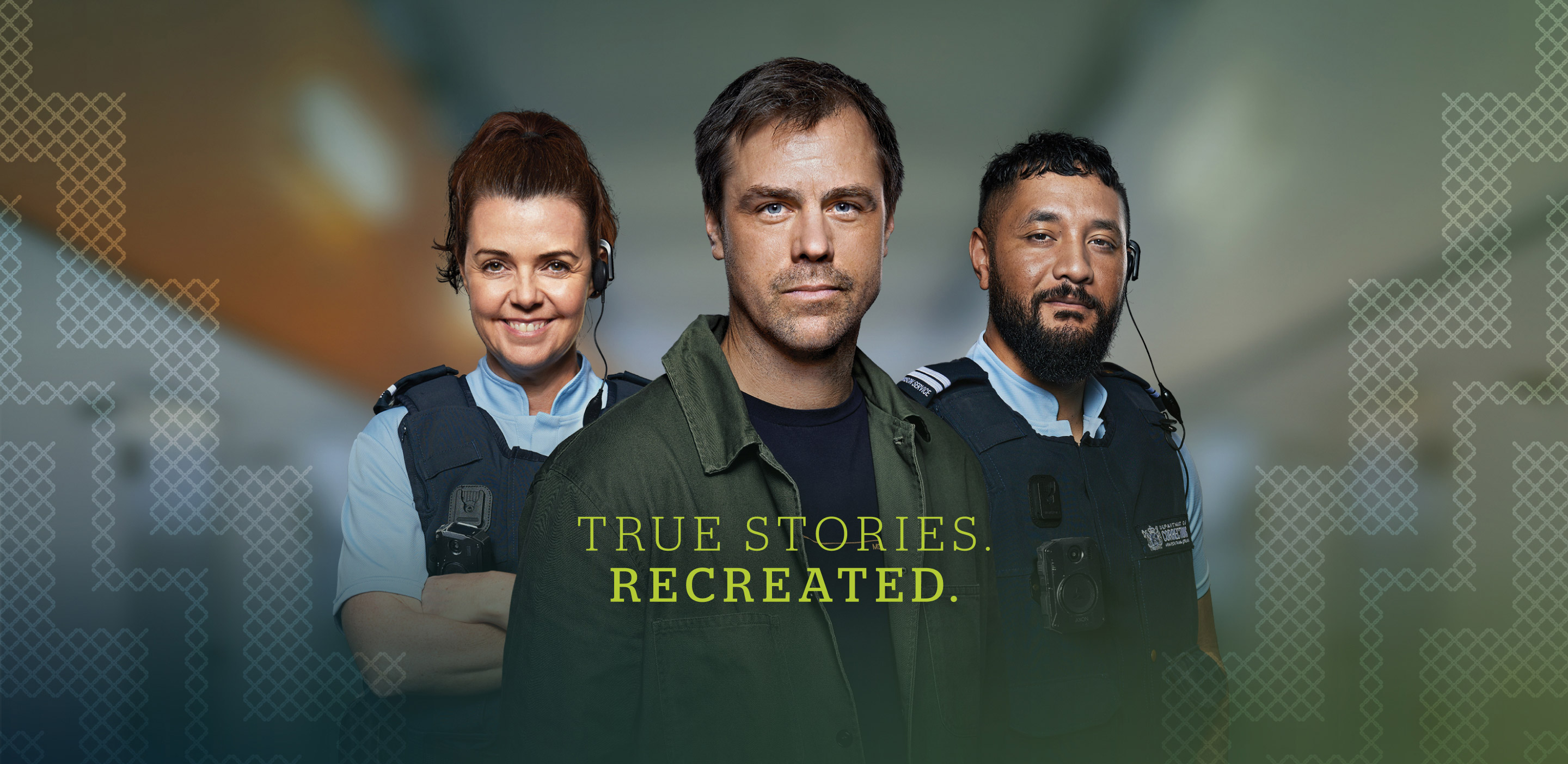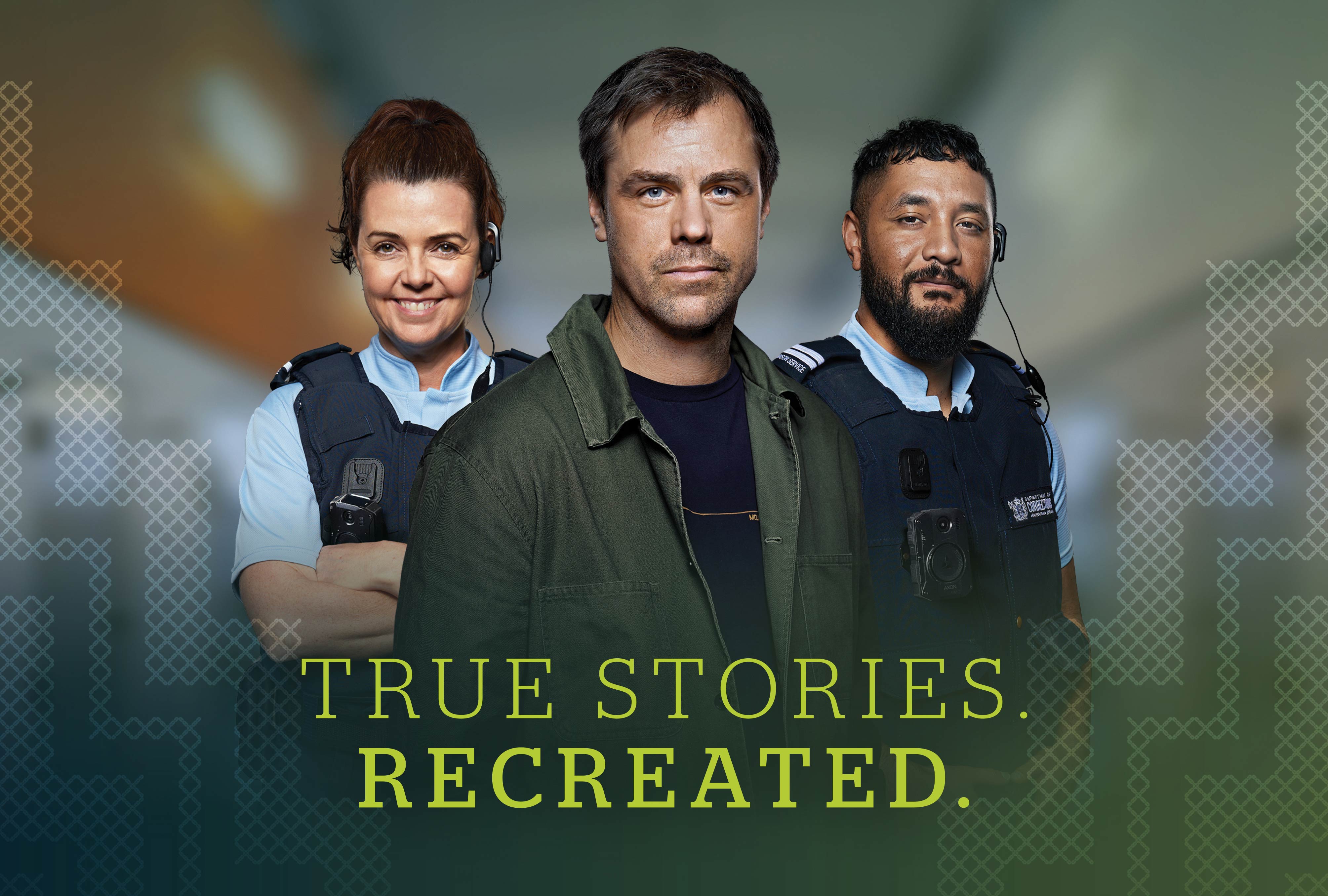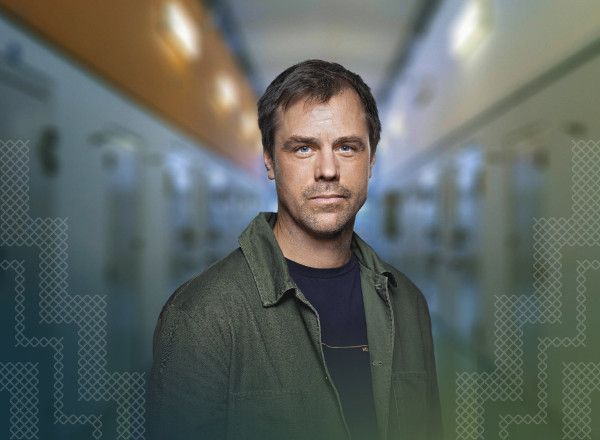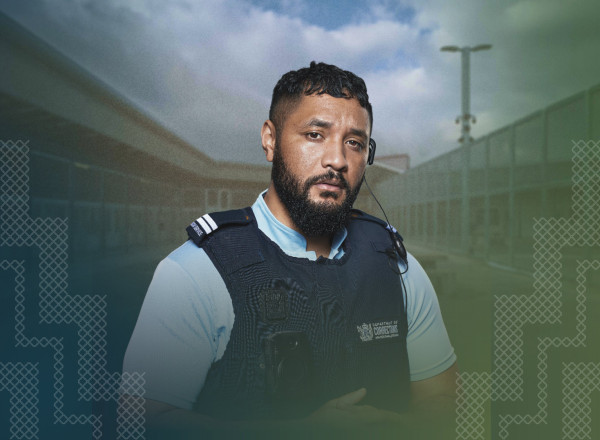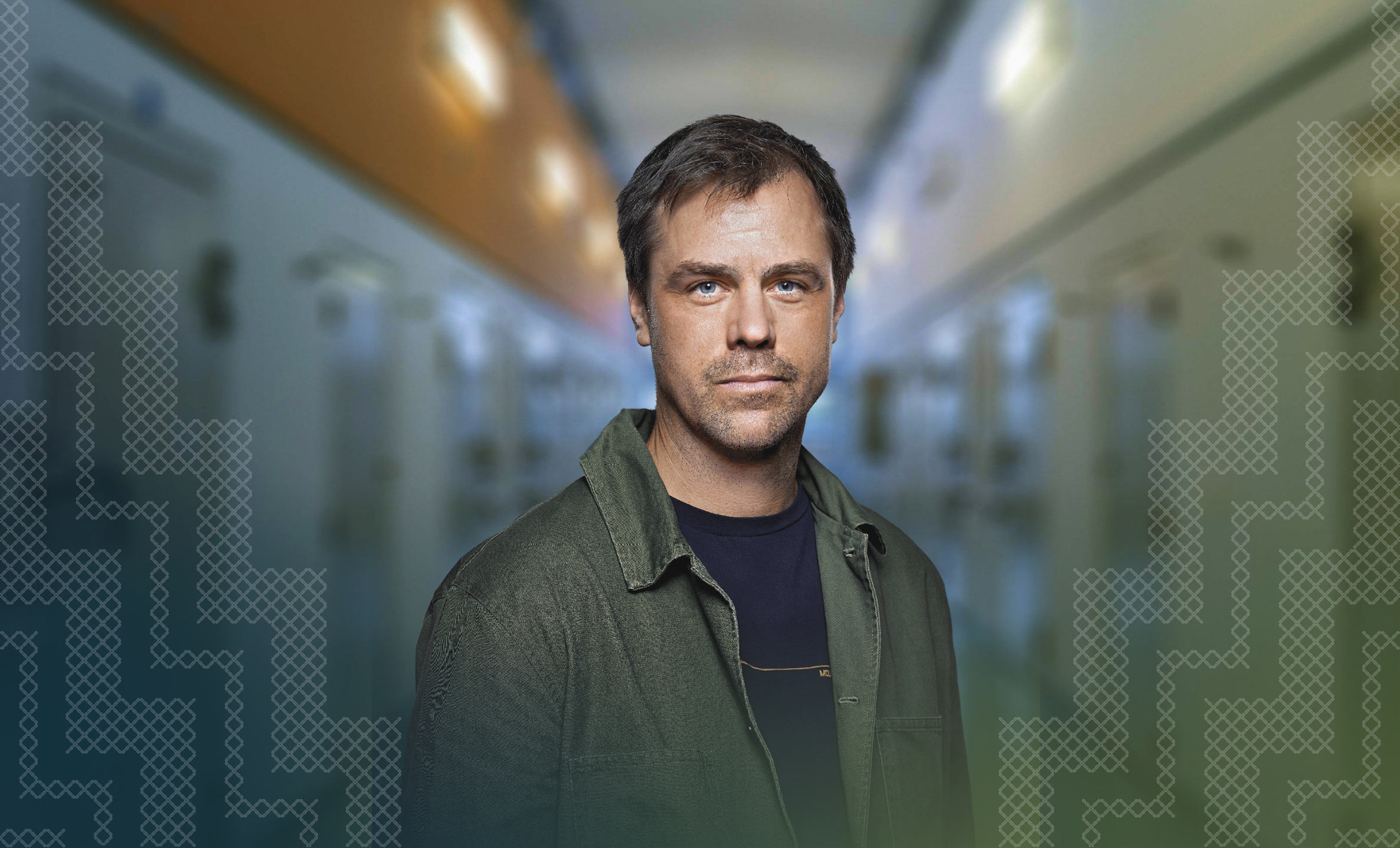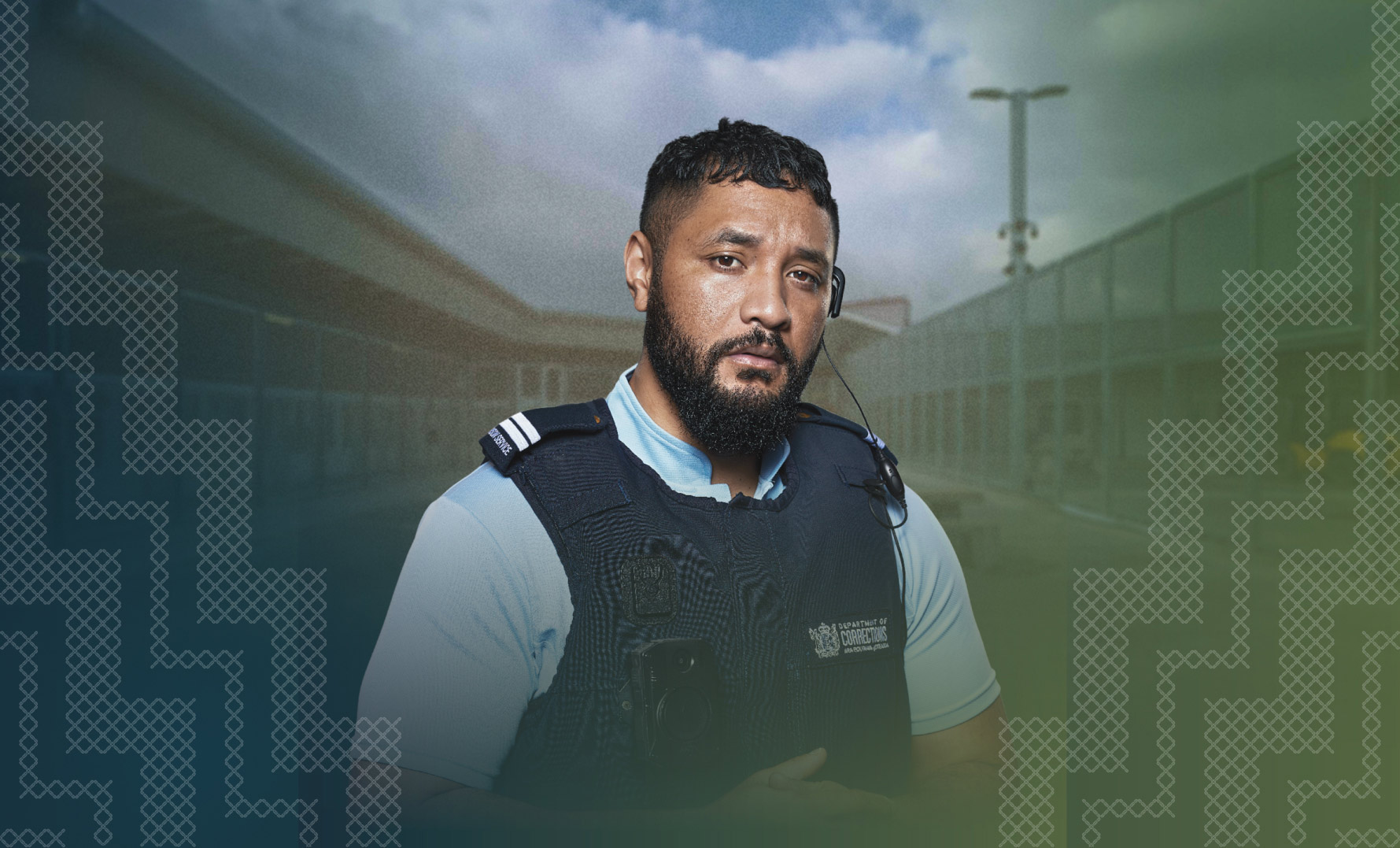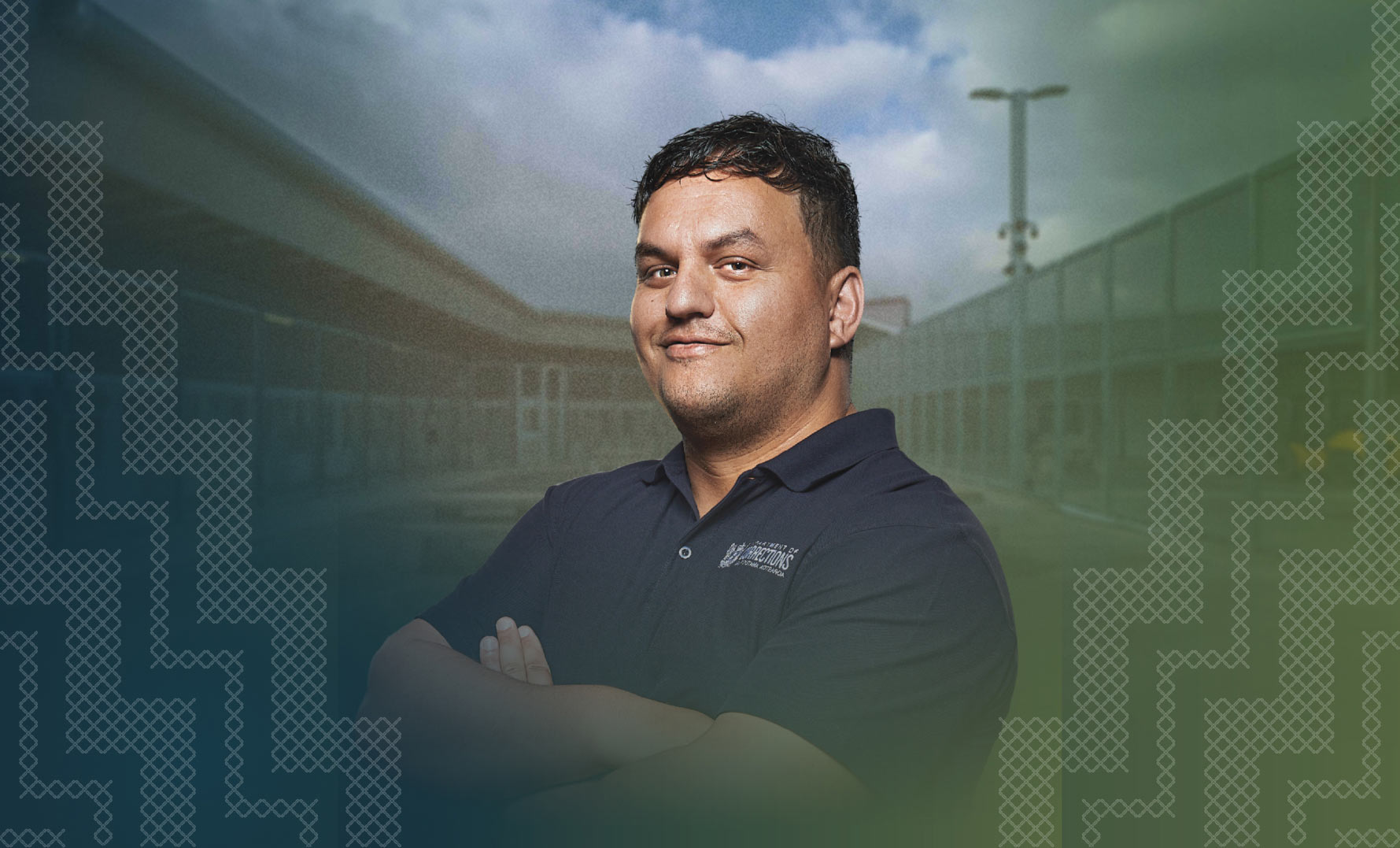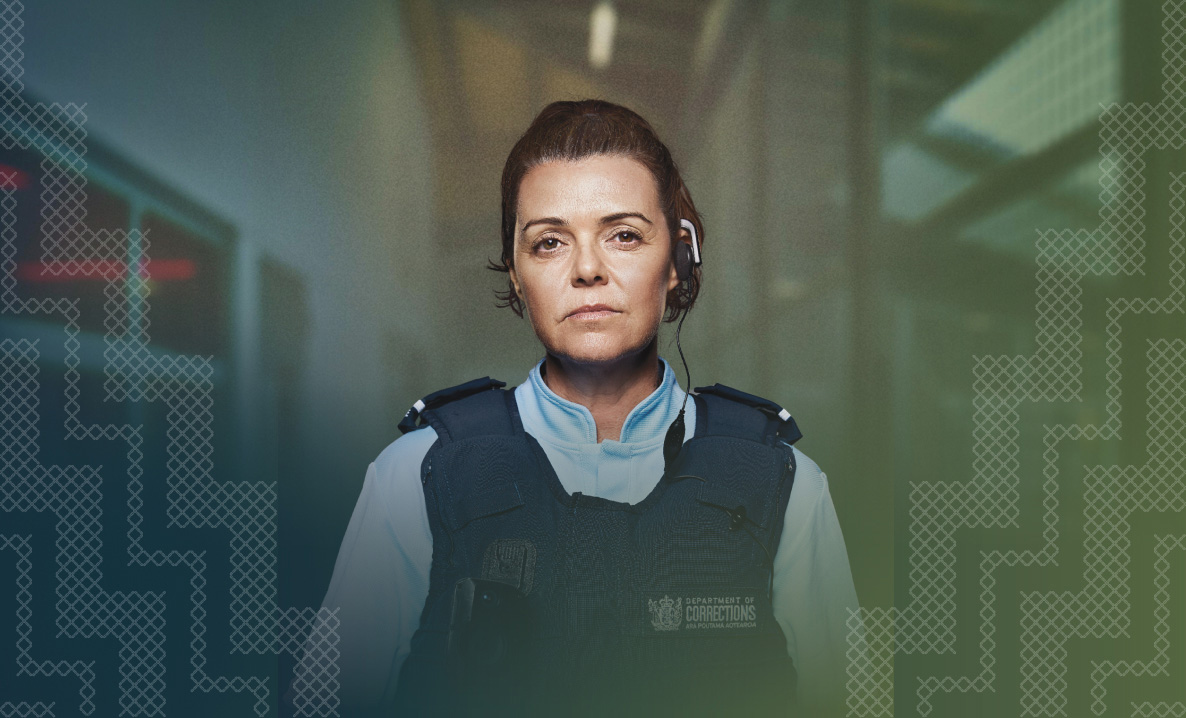Ryan's Intro
When I was first approached to go inside New Zealand's prisons to interview Corrections staff and hear their stories, I’d imagined it would be a pretty unpleasant place. Noisy, dark, bleak, the smell of stale sweat and damp concrete.
Like you, I’ve seen all the movies.
Even walking from the carpark to the prison for the 1st interview, I was still thinking, why am I doing this? What am I doing here?
But on entry, I realised that this was going to be very different to what I’d expected.
The place was busy, there was a hum to it, and the Corrections Officer escorting us that day immediately put me at ease - always watching and aware, but calm and relaxed. And the banter between teammates was genuine.
Clearly, working in a prison was nothing like I’d expected.
As we moved unit to unit, meeting different Corrections Officers and staff, I came to realise the most important assets the Department of Corrections have are their people. And even more important than the concrete that surrounds these sites are the relationships and trust between them.
This is an environment where no one ever works alone, there’s always a team presence and that's needed for safety and security, and while there’s always a risk in this type of work, I mean everyone has at least one story of when things got serious, safety is still the number one priority.
One thing I really noticed, the staff are really protective of those they look after, they see incarceration not as the end of the line for these people, but as an opportunity for rehabilitation. A chance to make positive change before their reintegration into society.
In developing Stories from the Inside I was initially keen to get my interviews with Corrections staff on camera, but, for security and safety reasons for everyone involved, that wasn’t possible.
Plan b was for me to go inside Corrections, meet the people and use their stories as a script for actors to share. So we used my tapes and transcripts and recreated the stories you see.
Even though these people are actors, the stories they tell are very real. Without doubt this experience has changed my perception of the New Zealand Corrections system.
I’ve witnessed first hand how those on the frontline are keeping New Zealand safe and I have a huge amount of respect for the people that have chosen this career and a great amount of admiration and gratitude for the work that they do.
And I’d encourage anyone, looking for a career with a difference, to consider joining Corrections.
Breached - Carie’s Story
What happens when a prisoner’s time inside is up?
Is it like the movies, where the prison gate is opened and the now ex-prisoner walks out, blinking in the bright sunshine, hopping on a bus to who knows where?
Ideally not, in New Zealand anyway.
One of the main objectives of Corrections is to support people to make some degree of change to their behaviour and reduce the chances of reoffending, all while keeping everyone safe.
What happens before and after someone’s release and in the weeks and months following, plays a big part in determining whether the system will be seeing them back behind the wire.
Key to this is motivating them to engage in appropriate rehabilitation programmes, and supporting them to reintegrate into the community. Rehabilitation and reintegration. Neither is easy and one isn’t usually successful without the other.
I met with members of the Corrections team involved in rehabilitation and reintegration – including Carie, a Probation Officer working out in the community.
Carie shared the story of a woman who she had worked with recently, which gave me a really good insight into… not just what the Probation Officer’s role entails, but how involved and time-consuming it is to create real change. And why it’s so frequently frustrating.
Carie explained this particular woman was a challenging individual. A complex personality, with past drug and family harm issues and a history of violence. Yet despite her background – and the nature of the offending, Carie says in-person she was kind and considerate once she understood they were there to help – not what you might expect, but apparently this duality is quite common.
The woman had been in prison on sentence for assault and during her time completed a 3 month women’s programme. On release, the team helped make sure she had a safe place to stay and checked on her regularly and connected her with the help she needed.
However, on that occasion, it wasn’t a success. The woman offended once again, and was soon back inside. While their work had helped, had moved the needle a bit, the woman herself hadn’t been ready to change.
Next time, after more work inside, she was ready to change. Something had clicked, and it was clear she didn’t want to cause anyone any harm again.
The woman’s desire to change was enabled by access to rehabilitation and community support, and the result of a lot of dedicated work from the Corrections probation team, other agencies they work with, and people in the community.
Real change takes time, Carie says – it’s challenging for everyone involved, but incredibly satisfying and rewarding on the occasions when it all works out.
Diary - Sililo’s Story
Corrections Officer Sililo is a pretty big unit. The kind of guy who up-for-it Saturday night troublemakers take one look at, and then quietly slink away.
It was no surprise to learn he started out as a nightclub doorman and then became a bodyguard, working for a security company doing close protection.
But Sililo’s imposing physicality is tempered with a natural sensitivity and gentleness. He says he has always had the ability to diffuse difficult situations by talking, listening, and reasoning with people.
Those life skills, along with his personal values and desire to work with people and make a difference, led Sililo to become a Corrections Officer. And Corrections are lucky to have him.
Today Sililo runs a specialised unit at a Corrections facility.
He’s a softly spoken guy, thoughtful and considerate, and when we first sat down to chat I asked him whether he really thought his work was in fact making a difference, if he could give an example of what change meant to him.
He thought about this for a few moments, then started telling me a story.
“There was this one guy," Sililo said. “big fella, bad reputation, threatening presence. Always quiet and withdrawn, wouldn’t talk”.
“He’s in here because, well he needs to be, he’s hurt people. Done bad things.
But even though this prisoner wouldn’t talk to me, I reassured him, said any issues, you know where to find me.”
A couple of months later the man came up to Sililo and handed him a stack of paper that said ‘please read me’ on the front. It was his journal.
You sure you want me to read your journal?, Sililo asked. “Yeah mister” the prisoner said. “I do”.
It was a harrowing read, detailing a lifetime of emotional and mental trauma and abuse – his shame and his regret at what had happened, and what he’d done to others.
Articulate, authentic, and for Sililo, both confronting and humbling.
Sililo encouraged the man to share the journal’s content, his thoughts and feelings, his truth, with his family, who had no idea of the abuse suffered, some of the things that had gone on. Sililo says the prisoner was able to express to them his shame and remorse, and regret. All the stuff he’d been internalising for years, came pouring out.
And after that, things changed. The man was calmer. Everyone around him, safer.
By showing empathy, communicating honestly, and being prepared to listen
and try to understand, Sililo had instinctively modelled the behaviour the man needed to see if he was to own his offending and begin the process of change.
He still has a long, long way to go, Sililo says, but it was a significant move in the right direction.
Check Up - Krish’s Story
Mental health is a problem inside prison, just as it is on the outside, in the community.
But, a problem multiplied.
While in the general community about 28% of people can be expected to experience some kind of mental illness episode during their lifetime, the figure is much, much higher in the prison population, at around 62% – often caused by, or at least complicated by, long-term substance abuse.
Many haven’t accessed healthcare in the community, haven’t seen a doctor until they offend and arrive in prison.
As a result, they present with undiagnosed and often acute mental health conditions. Corrections healthcare teams have a frontline role in triaging and ensuring access to accurate diagnosis, treatment and therapy.
I spent time talking to Krish, a Corrections nurse specialising in mental health. Krish says many of those he deals with have extremely complex mental illnesses that are difficult to diagnose.
Often they’re not in Corrections custody for long enough to diagnose and begin to treat effectively, and once released, progress that may have been made is often undone again when they return to old habits or refuse to continue with treatment.
Krish says this in again - out again engagement can be frustrating for him and his colleagues, but they do have some real success stories.
Krish told me the story of a man who was well known to the team… he’d been in and out of prison several times but they hadn’t been able to make significant progress.
On this occasion though, the healthcare team had something of a breakthrough – a diagnosis confirming a serious mental illness gave them a clear idea of the treatment and therapy needed to make a difference to the man’s stability and long-term prognosis.
And this time, the prisoner was prepared to engage in therapy with Krish and his team.
They got started, and, Krish says, slowly, very slowly, the man began to come back, the lights flickered back on.
The right combination of treatment, cognitive behaviour therapy and close support from Krish and his team mates had made a difference – the man became more accepting of his condition, aware of his limitations, and much calmer.
Krish spent a lot of time working with the man, often just talking about the prisoners' ideas, his business plans. Krish, who had some business experience himself was able to connect with the prisoner and get across the idea that to achieve what he wanted to do, he’d need to work hard on his mental wellness.
Krish says, the man found so much light and hope in his recovery journey, that he wanted to return to the community, and become a positive influence for those young people struggling with the same problems he had been.
Pushed Out - Tina’s Story
There’s no such thing, really, as a typical Corrections Officer. People join Corrections from all sorts of backgrounds and with all sorts of life experiences.
For some, Corrections is a second career, a new direction. Or, as was the case with Tina, a restart after a false start.
Before Tina joined Corrections she worked in an office, as a robot – her description.
Tina says she ‘felt like a bit of a dud.’ Her old boarding school friends were all off doing interesting things but she was stuck behind a desk, bored out of her mind.
Well, that soon changed.
In her late twenties, Tina chose to leave her desk job to join Corrections, embarking on her intensive Corrections Officer training.
Much of Tina’s training was focused on safety and security – days spent rehearsing assertive verbal commands, developing what officers call ‘situational awareness’ – the ability to sense when something’s not quite right, to see what’s going to happen before it does. And how to deal with it, as a team.
Now, as I’ve discovered and every Corrections Officer will tell you, prison isn’t like the movies. But it is a volatile environment, and can often be intimidating. Especially when you’re a newbie. And some prisoners do pick up on that.
Inside the units, you’ll never see a Corrections Officer on their own. They’re always in pairs, at least. Safety is the number one priority.
As I walked around a high-security unit with Tina and her fellow Corrections team mates, I learned how important teamwork is, and saw how closely they work together.
For example…
Checking on prisoners in their cells is a procedure carried out hundreds of times each day. While it may seem to be a fairly relaxed and routine thing, these observations are a crucial part of the health and safety process – in much the same way as a pilot’s pre take-off checks. Every detail matters.
Each Corrections Officer stands by a special viewing slot on each side of the locked door that allows them to look into the cell – and a convex mirror inside means they can see into every corner. Before they move on, each officer must be confident all is well inside – and give a thumbs up – which is a signal, not just for their colleague, but for the cameras that feed back to the control centre. It’s all about safety.
Just a few months after graduating, with her uniform epaulettes still pretty much box fresh, Tina and another Corrections Officer were escorting a nurse delivering medication to a prisoner.
The man was on observations – which meant he had to be checked every 15 minutes. So, you get the idea.
Safety protocols mean the Corrections Officers view the prisoner, put their foot against the door, then unlock it, only opening wide enough for the prisoner and nurse to interact and carry out treatment.
But this time, it didn’t go quite so smoothly. As the door opened, the agitated prisoner suddenly pushed out with considerable force and charged at them.
Then a whole lot of things happened at once. As Tina says, “In that split second, my training kicked in, the alarm was raised, support quickly arrived, and we were able to secure the prisoner and stop anyone from getting badly hurt”.
Tina says everything played out exactly as in their training. Exactly as she had practised.
And in that moment, in the face of his aggression, that confrontation, she trusted the process and her team.
Far from being discouraged by this experience, Tina says it increased her confidence.
She’s still assigned to the same unit, in the same high-security environment, and still loves starting her shift each day – because she knows the work she does at Corrections is making a difference.
Learn about the different types of roles here at Corrections
Read about the benefits of a career at Corrections
Learn about the different types of roles here at Corrections
Read about the benefits of a career at Corrections
Find your career today
To make sure we get to your application quickly and to keep things transparent, please apply directly using the link below. Just so you know, we handle all applications ourselves and don’t use third-party agents.
Want more stories?
Visit News and Events for on-the-job stories and opportunities to meet the team
